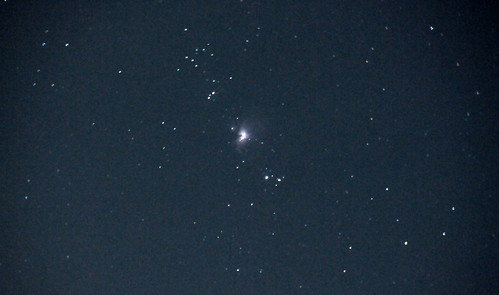| |
|
 |
| Nébuleuse d'Orion (M42) |
by ComputerHotline on Flickr |
|
- A star is a giant luminous ball of plasma that is put together by gravity.
- Most stars are visible from Earth.
- Stars give off intense heat and light. Like how the Sun gives heat and light to the Earth and other planets.
- If you get too close to stars, you will die because of the heat.
|
 |
| Helix Nebula |
by jimkster on Flickr |
|
- A nebula is a gust (a gust is a cloud of dust and gas). If there is enough gust, a star can be formed in the nebula.
- Our sun was in a nebula over four hundred years ago. After they are born from the nebula, they live for billions of years unlike us humans.
|
 |
| E0102-72.3: Supernova Portrait Gallery |
by Smithsonian Institution on Flickr |
|
- A supernova is when a star that is bigger than our sun explodes.
- This happens because, in less then a second, the core of the star collapses.
- The explosion blows the outer layer of the star leaving a contracting core there all alone.
- The materials and shock waves that come form the exploded star can form a whole new formation of stars.
- Supernovas can cause very beautiful images. A supernova can last 1-2 years.
|
 |
| Orion Nebula: Planetary Protection--X-ray Super Flares Aid Formation of Solar Systems |
by Smithsonian Institution on Flickr |
|
Astronomers use colours to show the magnitudes of stars (magnitude means the brightness of the star). Theses colours are.......
- Red is the brightest colour. Red stars are burning helium and other heavy elements. An example of this kind of star is Betelgeuse that is part of the constellation Orion.
- Orange is the second brightest colour.
- Yellow is the third brightest colour. Yellow stars are medium stars. They have medium temperature which causes them to burn out faster. They only live for about 10 million years.
- White is the second last brightness.
- Blue is the dullest colour of brightness.
|
 | | The Antennae: A pair of colliding galaxies about 60 million light years from Earth. | by Smithsonian Institution on Flickr |
| Astronomers also use colours to describe how hot the stars are. These colours are..... - Blue is the hottest colour of stars. The core of this star is estimated to be at a temperature of 15 million degrees Celsius. They do not live as long as other stars. The stars temperature is 29727.
- White stars are the next hottest stars. It has a temperature of 9727.
- Yellow stars are the third hottest stars. This temperature is 5727.
- Orange stars are the forth hottest stars . The stars temperature is 4927.
- Red stars are the fifth hottest stars . It has a temperature of 3427.
- Brown stars are the second last hottest stars. This temperature is 727.
- Black is the coolest stars. This stars temperature is - 273.
|
 |
| Hercules, entre Lyra et Corona borealis |
by Charl de Mille-Isles on Flickr |
|
- Constellations
are bright stars that are close together in our view that but really far apart
in space.
- People sometimes see patterns in these stars, that’s how
they get their names.
- Most of the names are from ancient Greece and are
usually Greek gods.
- An example is Cassiopeia who was
a mischievousness queen.
- Some other civilizations used other names
for their own constellations depending on what their beliefs and stories were.
- What constellations we see depend on where we are on the earth and where
the constellations are.
- Some constellations never rise or set and they stay
in the same positions all year. These constellations are called
circumpolar stars.
- Some of the northern hemisphere
circumpolar constellations are Cassiopeia, Ursa Major and Ursa Minor.
- There are also seasonal constellations, which are
only there part of the year depending on the latitude of the place.
|
 NeoK12.com - Educational Videos, Lessons, Quizzes & Presentations
NeoK12.com - Educational Videos, Lessons, Quizzes & Presentations




